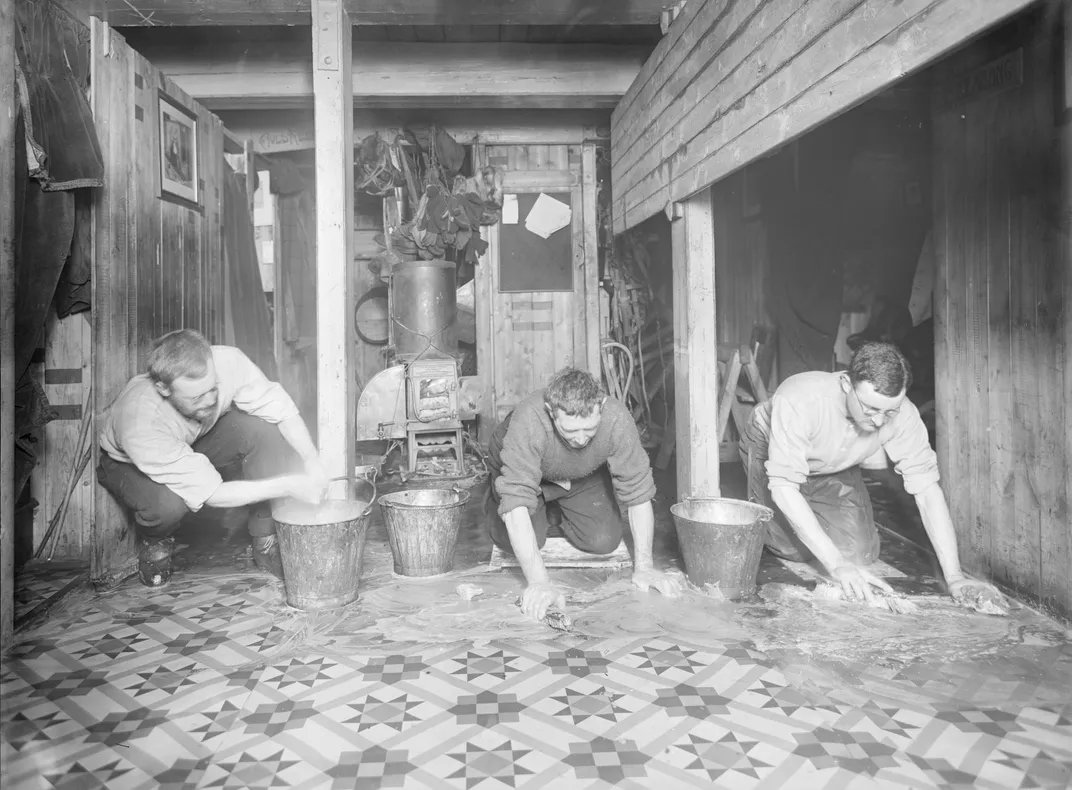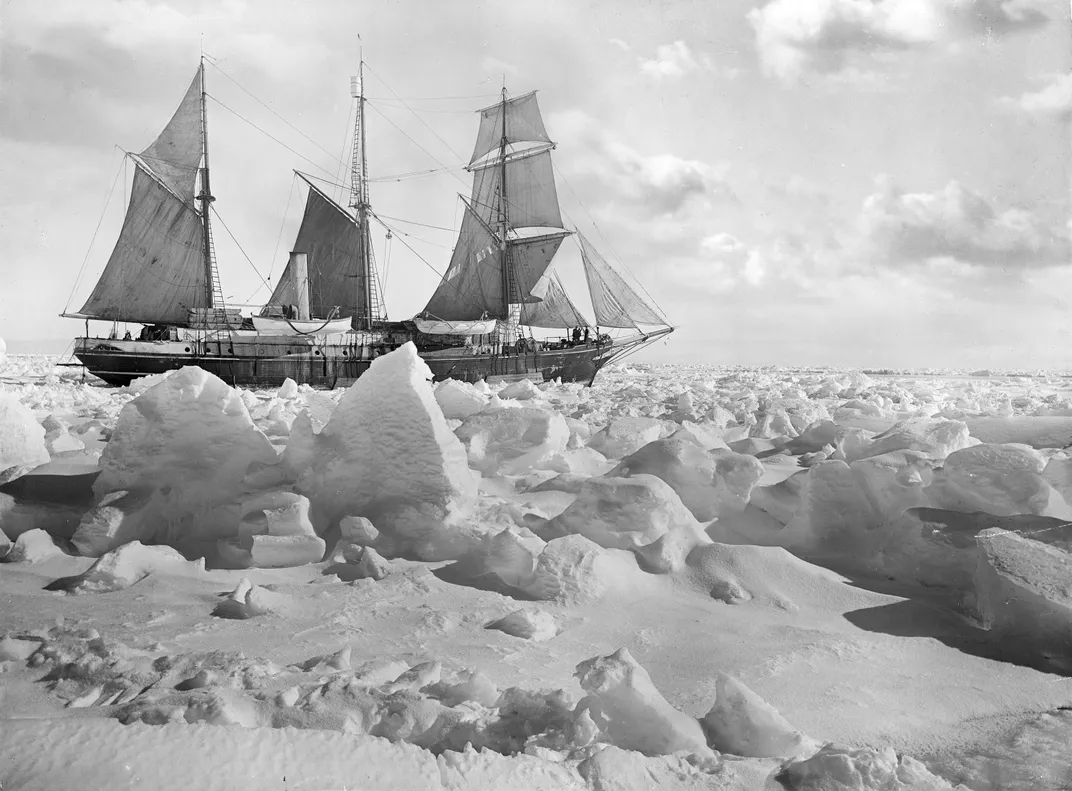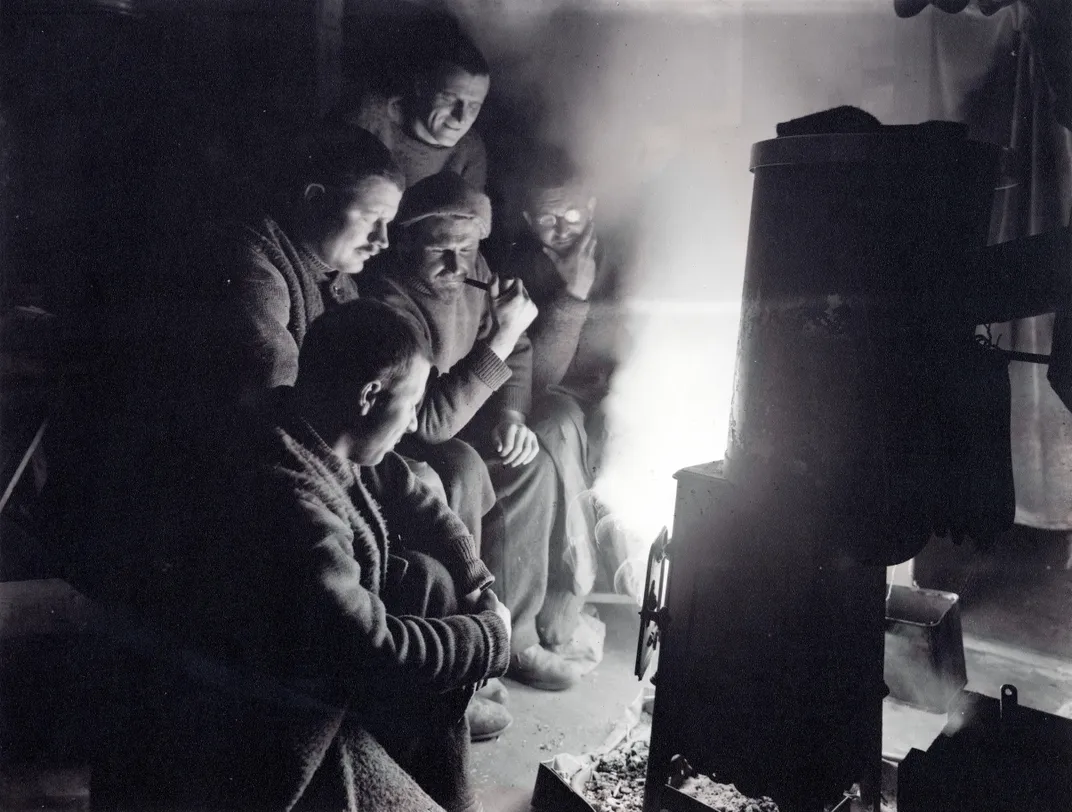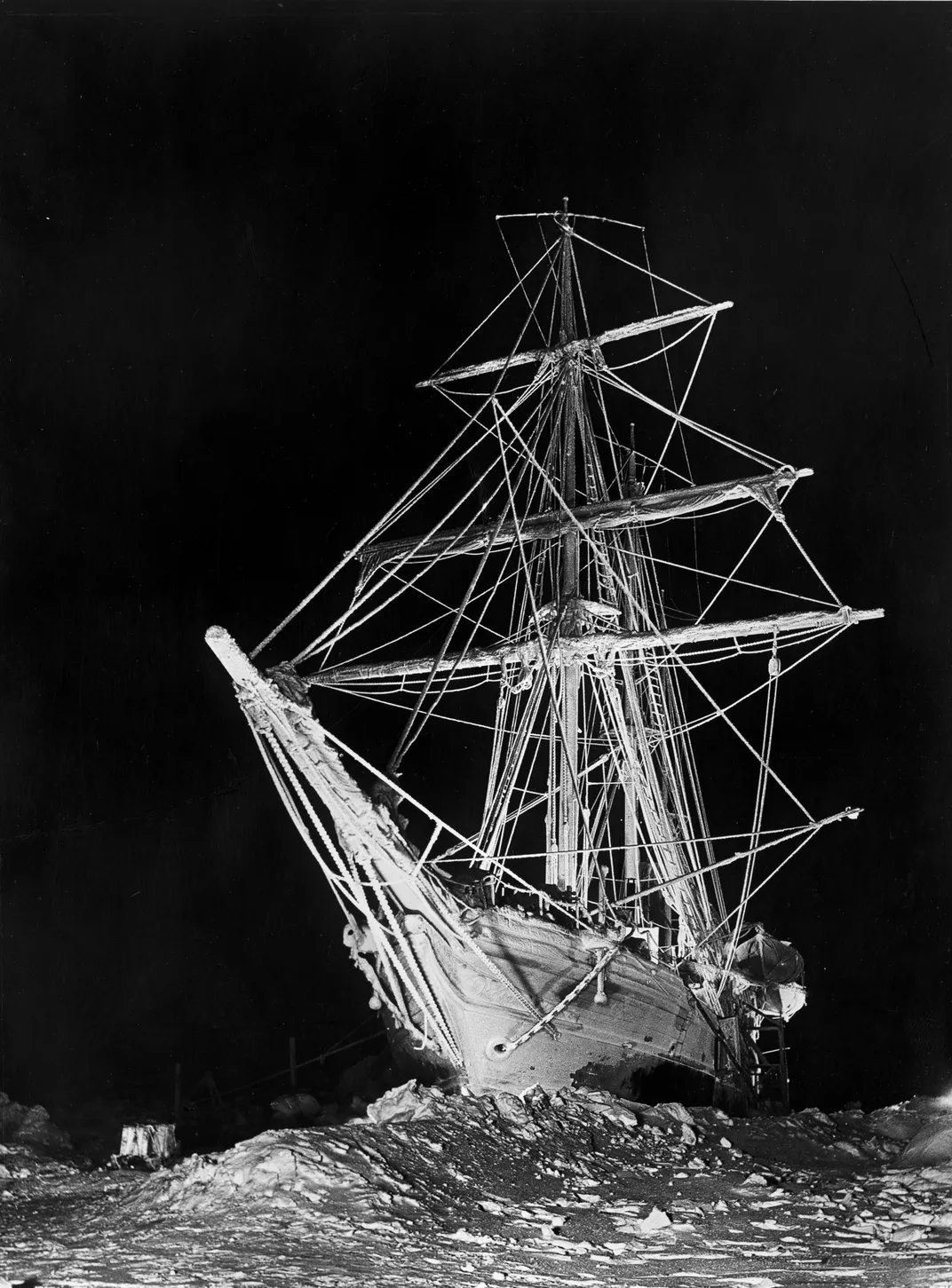Restored Photos From Shackleton’s Antarctic Wreck Reveal New Details
Photos taken during Shackleton’s Antarctic expedition have been digitally restored for the first time
/https://tf-cmsv2-smithsonianmag-media.s3.amazonaws.com/filer/6b/f6/6bf6665a-89dd-4a07-964c-002039fe863d/s0000141.jpg)
A little more than a century ago, Ernest Shackleton and the surviving crew members of the Endurance watched as their ship sunk beneath the Antarctic ice after being trapped for over a year. But while the ship was lost, Frank Hurley, the expedition photographer, managed to save his bulky camera equipment and continued documenting their efforts to survive. Now, for the first time Hurley’s photographs have been digitized and restored from the original plates and negatives and are on display at the Royal Geographic Society (RGS) in London.
Over the course of the nearly 17 months that the crew of explorers were trapped in Antarctica after floating ice crushed their vessel, Hurley documented everything about their day-to-day struggle to survive. Back then, taking a photograph wasn’t easy at the best of times: cameras were cumbersome, the celluloid and glass plate negatives were delicate and Hurley had to lug heavy barrels of developing fluid around while he and the crew were fighting to stay warm and nourished in the barren Antarctic ice floes, Jessica Baldwin writes for Al Jazeera English.
"Every image had to earn its place because it cost a lot; both to buy the glass plates and to develop and each one had to matter," RGS curator Meredith Hooper tells Baldwin.
Even now, it would be extremely difficult for a photographer with top-of-the-line equipment to take photos in the conditions that Hurley faced, but somehow he managed to do it, even at the risk of his own life. At one point, the photographer chose to dump food out of his boat in order to keep from sinking under the weight of his equipment and negatives, Kate Sierzputowski writes for Colossal.
Hurley not only had to fight the cold: he had to figure out how to take pictures in the dark. Some of Hurley’s most compelling photographs from the expedition were taken at night, which posed a challenge without artificial lights. Instead of stage lights, Hurley would light a flare, holding it with one hand to illuminate the scene while taking a photo with the other, Sierzputowski reports.
"It must have been an extraordinary flash of light in the middle of an Antarctic dark night, in the middle of the ice,'' Hooper tells Baldwin. ''In total, total darkness is this one ship hundreds of miles from any known human, stuck on the ice and when he [Hurley] does capture the image it's so powerful. It's the only way we can get a sense of the loneliness and isolation."
The men were finally rescued in August 1916 after Shackleton and a small crew set off for the British-owned island of South Georgia. Hurley brought back loads of glass and celluloid negatives, printing some of the most dramatic photos ever captured. The negatives eventually ended up in the hands of the RGS, which stored them for over 80 years before digitizing and restoring more than 90 of Hurley’s photographs for public display. Remarkably, the restored photographs have revealed previously unseen details, such as a sixth man hidden behind a smoky fire in one photo where only five men were seen before.
If you’re lucky enough to be in London before February 28, 2016, you can see Hurley’s photographs in person in the Royal Geographical Society’s new exhibition, "Enduring Eye: The Antarctic Legacy of Sir Ernest Shackleton and Frank Hurley."



